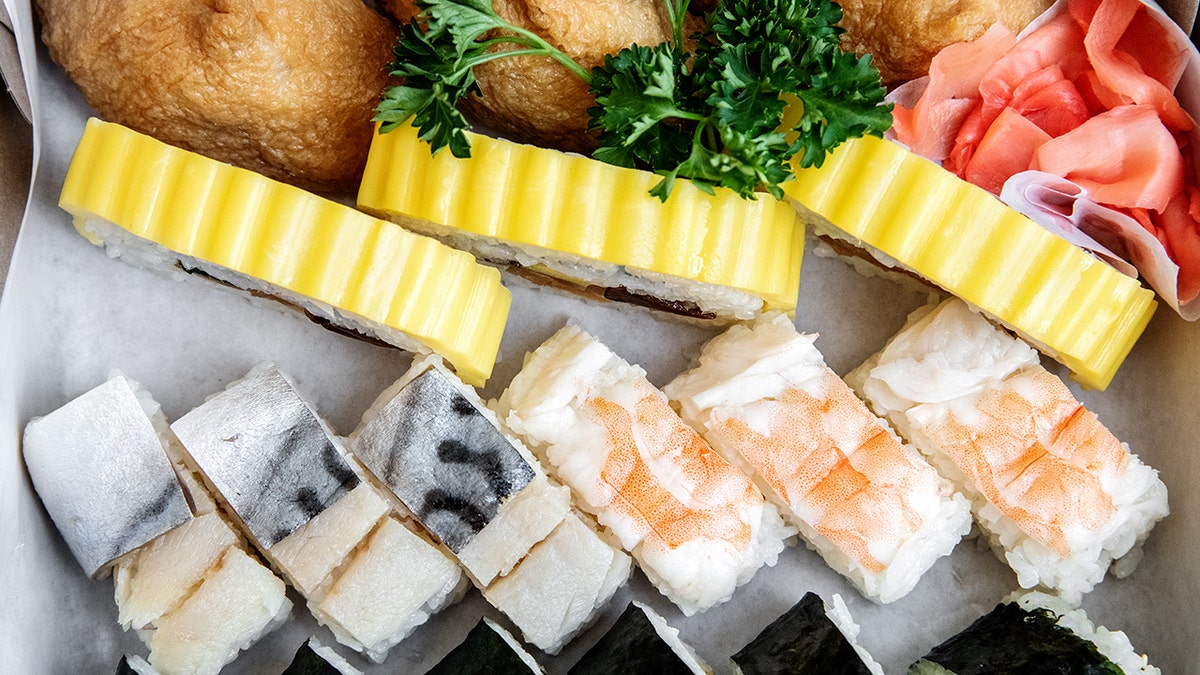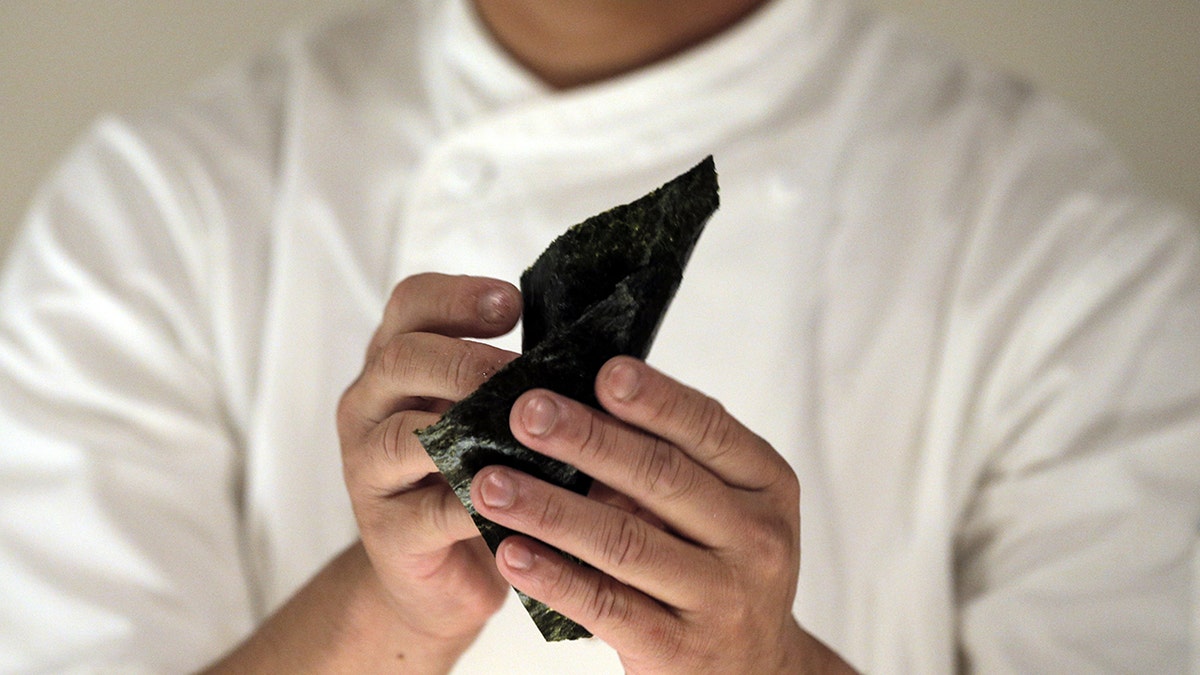Making SUSHISAMBA's Samba S'mores
Executive chef Pedro Duarte shows us how to make this Manhattan hotspot's famous dessert.
Sushi is a tasty meal that usually contains rice, seaweed and some sort of fish, but not always. A common misconception is that all sushi contains raw fish, which is actually not the case.
If you’ve never had sushi before, it can seem like an intimidating thing to eat, but there are so many different variations that there is sure to be something you’ll like.
Sushi is widely thought to have originated in Japan, and while the country is responsible for creating the first versions of sushi that we know today, it actually originated in China.
SUSHI STACKS ARE TRENDING ON TIKTOK: TRY THE RECIPE
In sushi's earliest beginnings, rice was simply used as a way of preserving fish. In China, fish was wrapped up in rice, but the rice was tossed and just the fish was eaten.
It was actually in Japan where people started to eat the rice and the fish.

Sushi is a very popular Japanese dish. (Mariah Tauger/Los Angeles Times via Getty Images)
Sushi then came into western culture and quickly spread throughout the United States.
Now, the dish has become so popular that there is even a day dedicated to it each year.
On June 18, International Sushi Day, grab your favorite roll, or try sushi for the first time.
If you've never been to a sushi restaurant before, it can be confusing, however. You may not know how to order sushi, what to order or how to properly eat what is given to you.
If you've never stepped foot in a sushi restaurant before, here is everything you need to know all rolled up into a beginner’s guide for ordering sushi.
- Understanding the different kinds of sushi
- What do I order?
- What’s on my plate?
1. Understanding the different kinds of sushi
The first step to trying sushi is understanding the different types. Maki is a popular roll to choose. These are rolled with fish and/or vegetables, rice and seaweed along the outside.
Uramaki is very similar and is another popular option. This looks like inside-out sushi. In this roll, the rice is on the outside rather than on the inside.
Then, there is sashimi, which does not contain any rice at all. It's just thinly sliced fish.

Temaki is one example of a popular type of sushi. (Carlos Avila Gonzalez/The San Francisco Chronicle via Getty Images)
There’s also temaki, which is rice and filling wrapped up in seaweed. This has a unique look because of its cone shape.
The last popular type of sushi is nigiri.
These have rice on the bottom and a piece of fish over the top.
2. What do I order?
Now that you understand the main types of sushi, it’s time to pick what you want to order. If you’ve never eaten sushi before, you may want to start off simple and not have raw fish at all. There are several varieties of sushi that don’t contain raw fish.
One key term to look out for if you want a seafood-filled roll but don’t want raw fish is tempora. Tempora is a breaded fish lightly fried in batter.
CLICK HERE TO SIGN UP FOR OUR LIFESTYLE NEWSLETTER
If you don’t want seafood at all, you can also get a vegetable-filled roll, such as an avocado roll.
There are lots of different kinds of sushi that are good for beginners to order.

California rolls are a popular kind of sushi if you have never tried it before. (Gado/Getty Images)
Here is a list of good beginner sushi and what you can expect inside.
- Philadelphia roll: salmon and cream cheese
- Boston roll: shrimp, avocado and cucumber
- Spicy tuna roll: tuna and spicy mayo
- California roll: crab (or imitation crab), avocado and cucumber
- Spider roll: tempura soft-shell crab, avocado, cucumber and spicy mayo
- A vegetable roll (like an avocado roll)
3. What’s on my plate?
Now, you've sat down at the restaurant, you’ve ordered your sushi and the waiter has brought you your plate.
The first thing to know is that sushi is typically dipped in soy sauce, so pour some into a bowl next to your plate.
For picking up the sushi, chopsticks will be given to you. If you don’t want to use chopsticks, you can still enjoy sushi with your hands or even with a fork if that is easier for you.
There are also going to be two other things on your plate: wasabi, which is a green color, and ginger, which is pinkish.
Wasabi has a spicy kick to it, so if you like those flavors, put a little on your sushi.

When you order sushi, you'll also be given wasabi, ginger and soy sauce. (Natasha Breen/REDA&CO/Universal Images Group via Getty Images)
Then, pick up your sushi and give it a taste. Sushi is typically eaten all in one bite. After you finish a piece of sushi is when your ginger comes in. Ginger is given to you as a way to cleanse your pallet.
This could be between every bite of sushi you have or every time you switch to a different kind of roll so that you have a clean palette going into the next kind of sushi.
CLICK HERE TO GET THE FOX NEWS APP
There are so many different kinds of sushi out there and as you get more comfortable with the different flavors, you’ll be able to try more versions of the dish and figure out which ones you like.

